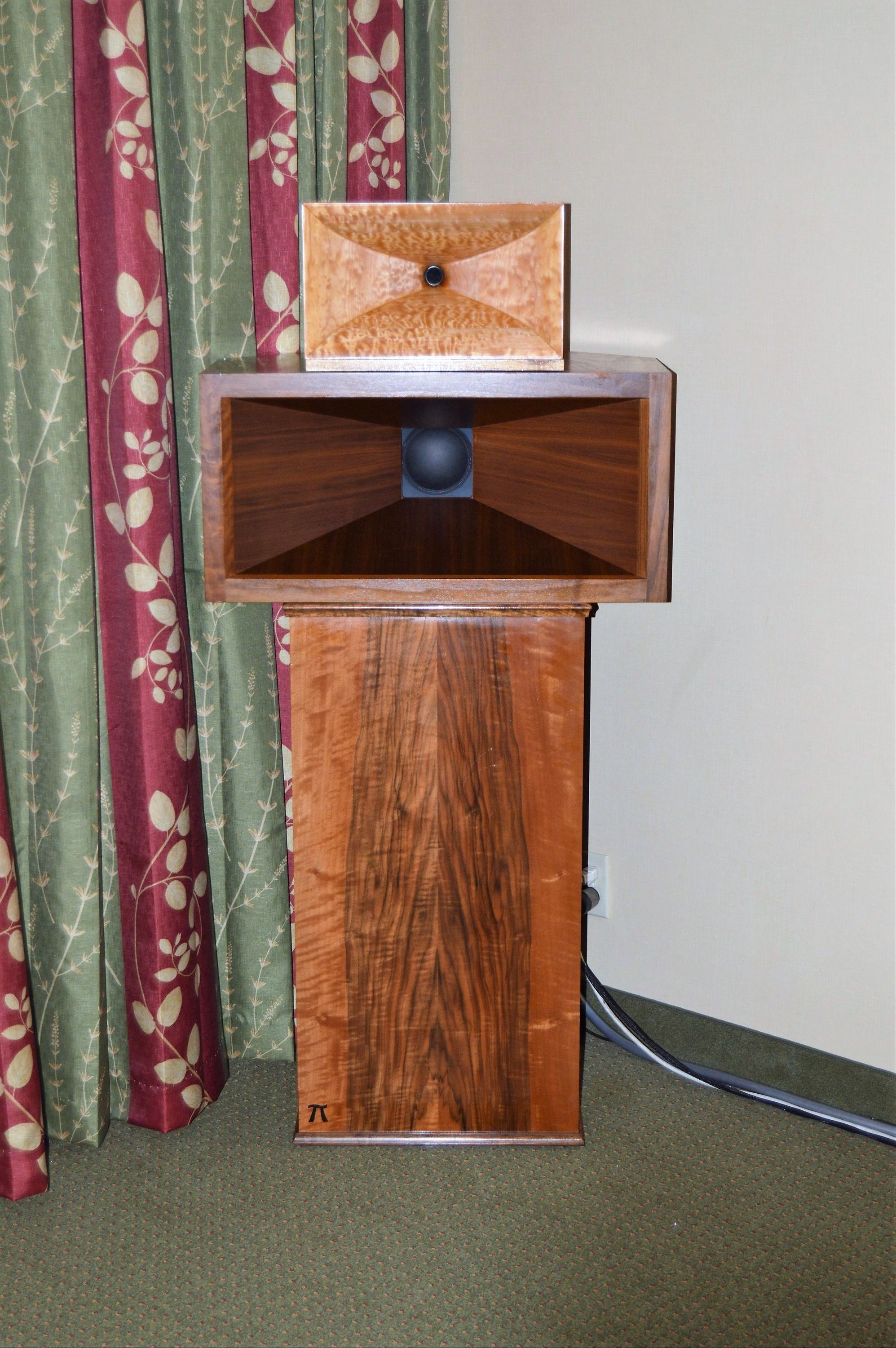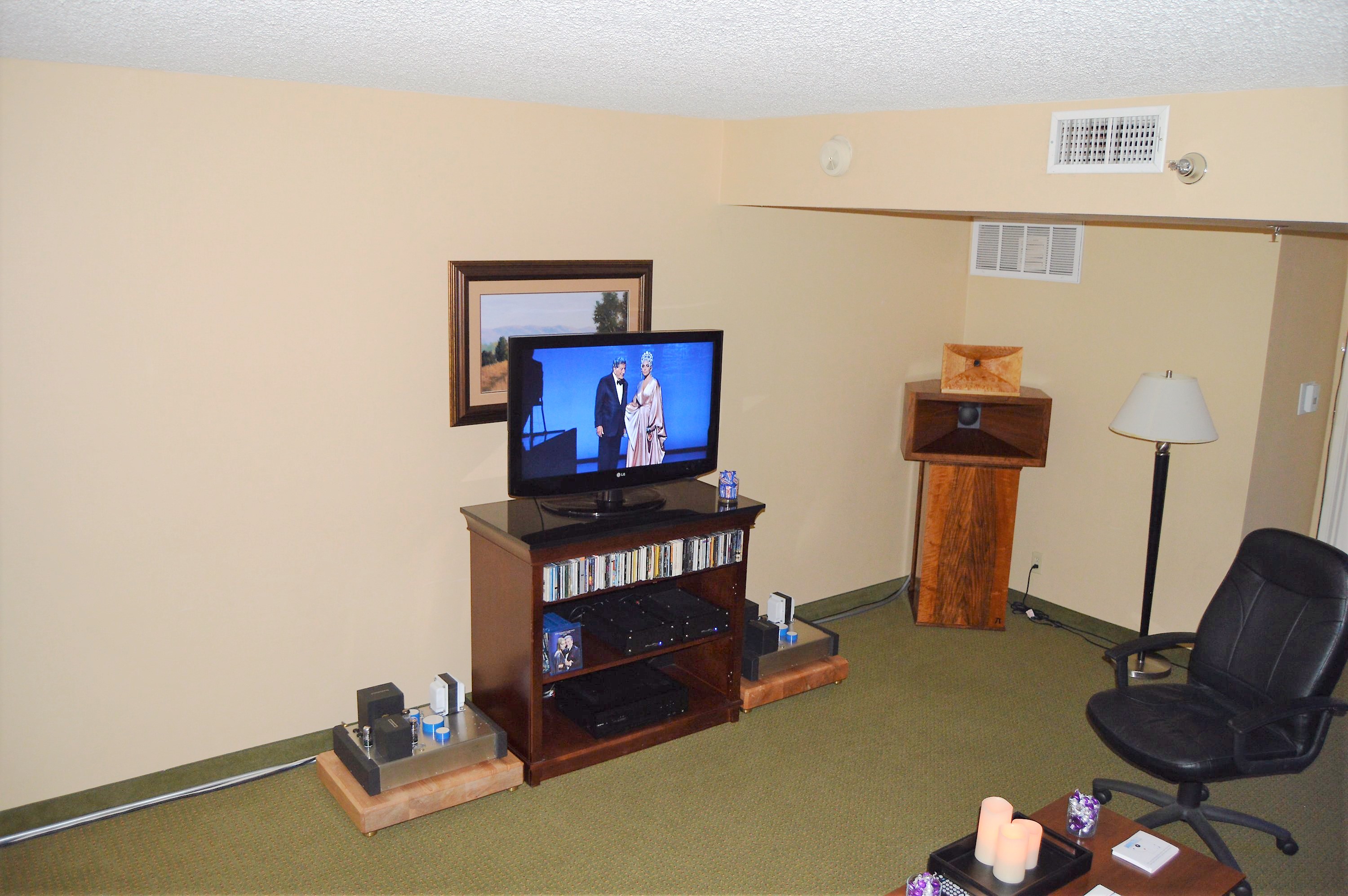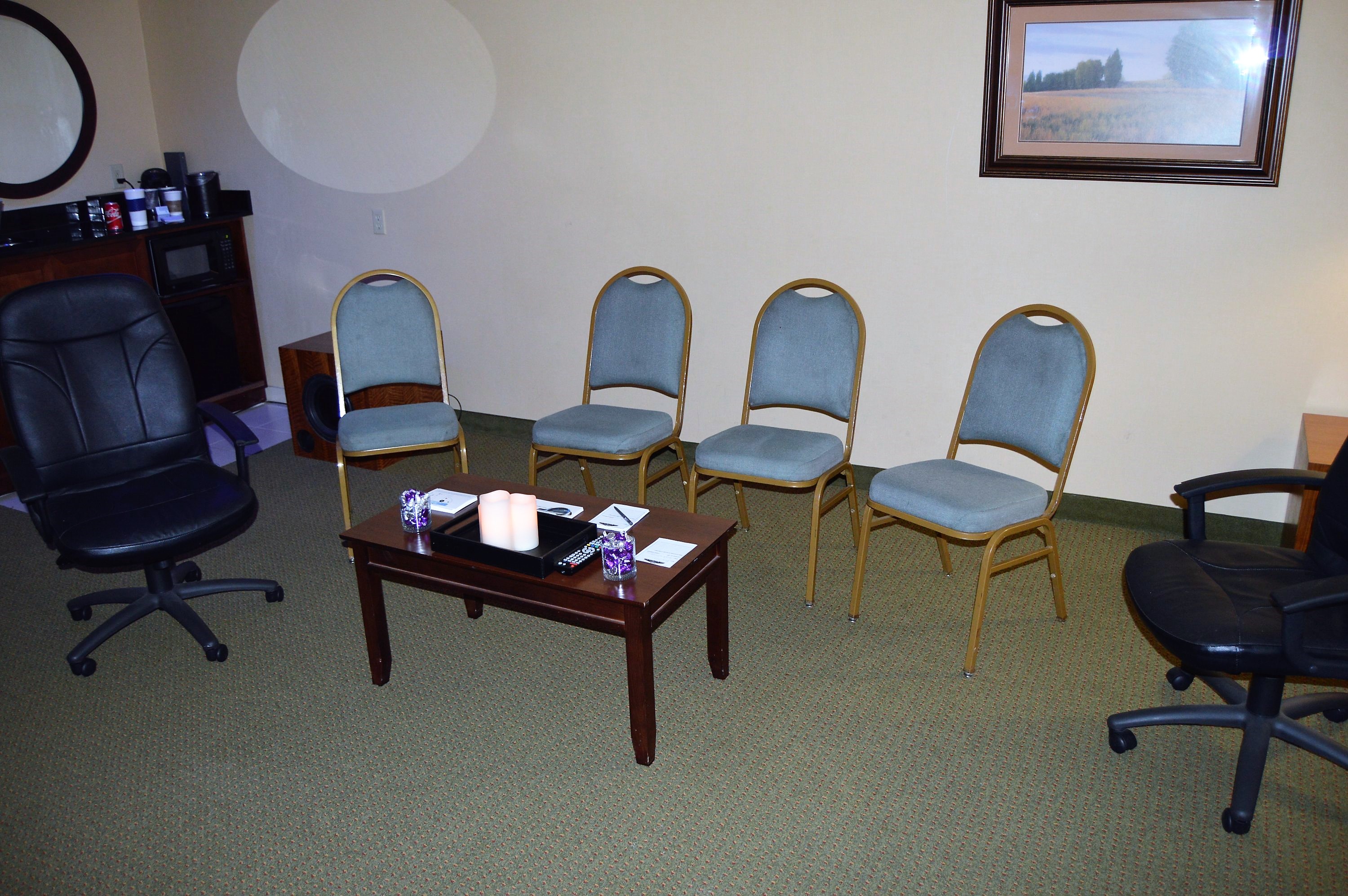|
|
|
|
|
|
|
|
|
|
|
|
|
|
|
|
|
|
| Re: LSAF 2017 [message #85190 is a reply to message #85167] |
Wed, 10 May 2017 19:14  |
 |
 Wayne Parham
Wayne Parham
Messages: 18984
Registered: January 2001
|
Illuminati (33rd Degree) |
|
|
 Kelly Parham greets you in the π Speakers room
Kelly Parham greets you in the π Speakers room
I really loved the show this year. I always do, even with all the work, but this year was even better for me. We had our usual fun dinner night out on Saturday, this year with Scott and Donna Shaeffer and Barry Solof. Kelly and I always love the dinner outings with our friends from the show. And for another thing, I brought my seven π constant directivity cornerhorns:
 seven π constant directivity cornerhorn
seven π constant directivity cornerhorn
The driver complement is as follows. High-frequencies are generated by a B&C DE250 compression driver mounted on a birds-eye maple H390C waveguide. The midhorn uses an Eminence Delta 10 driver and the bass bin houses a JBL 2226H driver.
The thing that's unique about constant directivity cornerhorns is they are designed to be placed in corners, and they take advantage of the near proximity to the boundaries to eliminate near reflections. Since the source is acoustically close to the corner, there are no early reflections.
Additionally, each subsystem has 90° degree constant directivity, so the radiation pattern through the entire audio band is uniform. Room coverage is exceptionally smooth and free of early reflections. I know of no other configuration that can achieve this. Constant directivity cornerhorns do not suffer from early reflections, so there are no midbass/midrange anomalies from the walls behind or adjacent to the speakers. See the link below for an illustration of this phenomenon:
I used a pair of three π subwoofers in opposite corners, which combined with the woofers in the mains, forms a standard Welti multisub configuration. The low-pass frequency for the subs was 50Hz, so it smoothed the 40Hz mode that these hotel rooms create.
One thing was different about my setup this year, which was that I setup along the long wall. Every other time I've bought constant directivity cornerhorns, I've setup along the short wall. They really work better that way because the axes cross in the middle of the room. But I thought I'd give the long wall a try this year.
 seven π constant directivity cornerhorns on each end of the long wall
seven π constant directivity cornerhorns on each end of the long wall
Setup this way puts the axes crossing just a few feet from the rear wall, but still ahead of the listeners. I wasn't sure it would work, but I tried it and it sounded great.
 Position of the listening chairs in the π Speakers room
Position of the listening chairs in the π Speakers room
Beyond axes crossing position, I was concerned that the wall behind the listeners would be too close. I don't like that because the reflection from the wall is so close to the direct sound both in amplitude and delay. That's definitely a problem. But again, it sounded good. We always have that problem in hotels because the rooms are relatively small and the walls are very rigid, being solid concrete. That's good for blocking vocal range sound between rooms but its bad because it makes strong reflections and room modes. But that's where constant directivity cornerhorns shine strongest - They are most immune to room problems, especially when used in conjunction with multisubs.
The amps I used were Blade amplifiers built by Scott Shaeffer of Found Music. They are Class A distributed load P/P monoblocks. The Blade is constructed in either ultra pure Cu or Ag constructions. My pair was the copper version. The chassis is heavily gusseted 11 guage stainless steel for vibration control. The tube compliment is 6SN7/KT77 and power output is 28 watts with headroom to 60 watts peak.
 Found Music Blade Amplifier
Found Music Blade Amplifier
|
|
|
|







